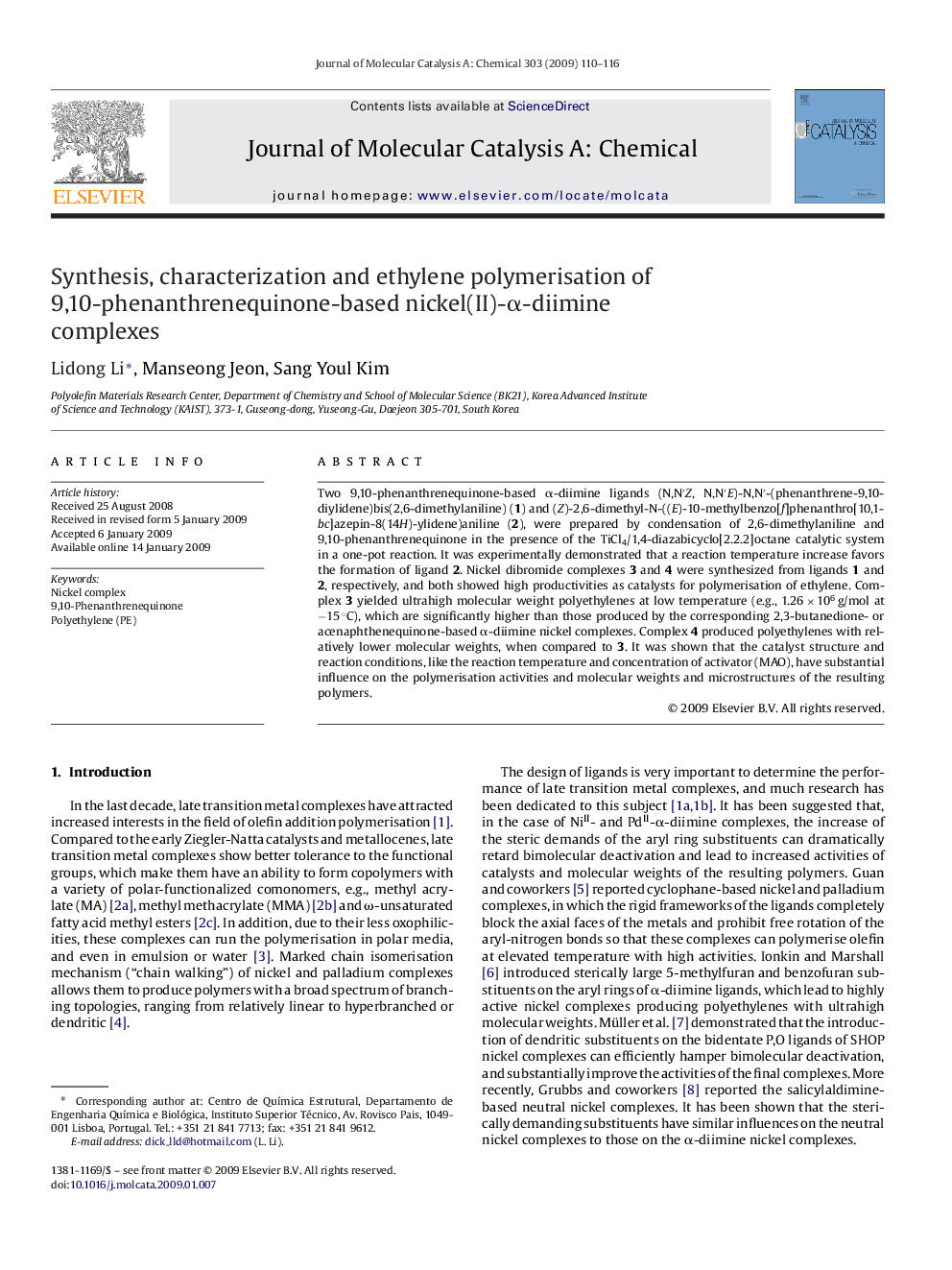| کد مقاله | کد نشریه | سال انتشار | مقاله انگلیسی | نسخه تمام متن |
|---|---|---|---|---|
| 67127 | 48466 | 2009 | 7 صفحه PDF | دانلود رایگان |

Two 9,10-phenanthrenequinone-based α-diimine ligands (N,N′Z, N,N′E)-N,N′-(phenanthrene-9,10-diylidene)bis(2,6-dimethylaniline) (1) and (Z)-2,6-dimethyl-N-((E)-10-methylbenzo[f]phenanthro[10,1-bc]azepin-8(14H)-ylidene)aniline (2), were prepared by condensation of 2,6-dimethylaniline and 9,10-phenanthrenequinone in the presence of the TiCl4/1,4-diazabicyclo[2.2.2]octane catalytic system in a one-pot reaction. It was experimentally demonstrated that a reaction temperature increase favors the formation of ligand 2. Nickel dibromide complexes 3 and 4 were synthesized from ligands 1 and 2, respectively, and both showed high productivities as catalysts for polymerisation of ethylene. Complex 3 yielded ultrahigh molecular weight polyethylenes at low temperature (e.g., 1.26 × 106 g/mol at −15 °C), which are significantly higher than those produced by the corresponding 2,3-butanedione- or acenaphthenequinone-based α-diimine nickel complexes. Complex 4 produced polyethylenes with relatively lower molecular weights, when compared to 3. It was shown that the catalyst structure and reaction conditions, like the reaction temperature and concentration of activator (MAO), have substantial influence on the polymerisation activities and molecular weights and microstructures of the resulting polymers.
Two 9,10-phenanthrenequinone-based α-diimine ligands 1 and 2 were prepared by condensation of 2,6-dimethylaniline and 9,10-phenanthrenequinone in the presence of the TiCl4/1,4-diazabicyclo[2.2.2]octane catalytic system in a one-pot reaction. Reaction of ligands 1 and 2 with (DME)NiBr2 in dichloromethane at room temperature led to nickel complexes 3 and 4, respectively, which can polymerise ethylene with good activities in the presence of MAO as activator.Figure optionsDownload as PowerPoint slide
Journal: Journal of Molecular Catalysis A: Chemical - Volume 303, Issues 1–2, 15 April 2009, Pages 110–116